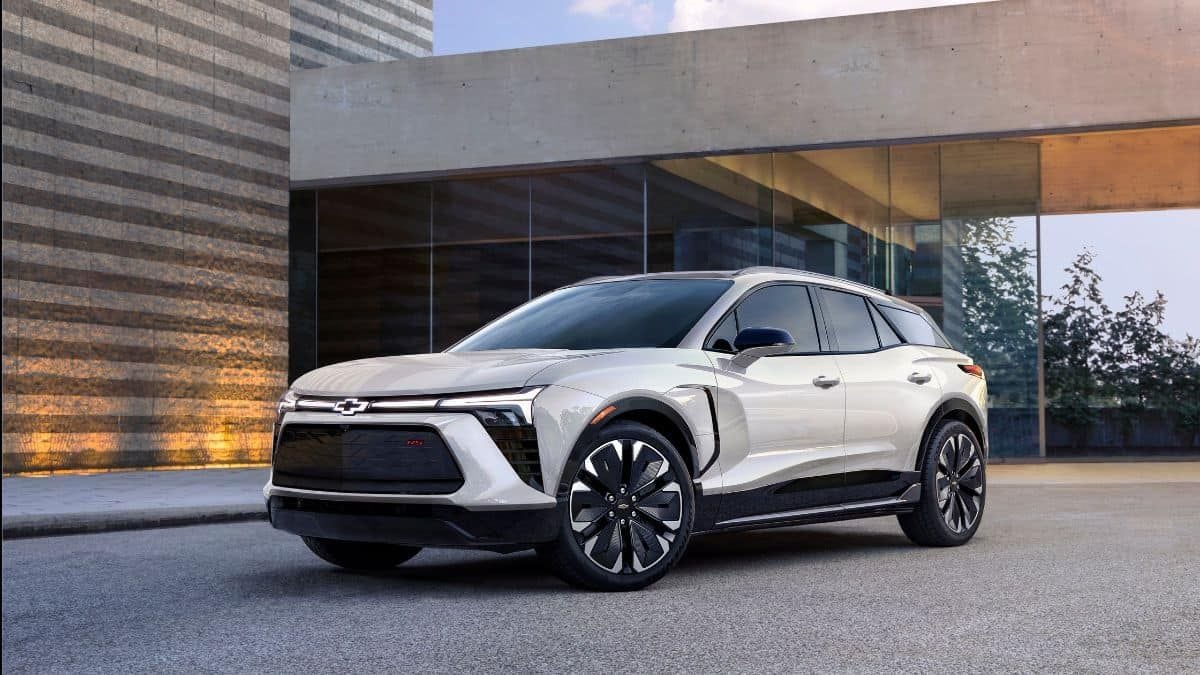According to autoweek.com, deliveries are beginning and we should expect to see both a lower priced Blazer model and a highest priced SS version sometime next year, which means Chevy is leading from the mid range with their newest EV. According to Chevy, the starting MSRP for the Blazer is $56,715 before delivery, tax, licensing and other fees. This means the real as delivered price for the current base model 2LT Blazer EV will almost certainly cost in the low $60k range assuming one counts taxes, fees, and any dealer added markup or features). I’ll note that some states may exempt EVs from some or all of the sales tax, and still others offer separate rebates as well, so in stating the low $60k range I am ignoring those things and simply estimating that “off the lot” pricing is going to be a few thousands more.
One can’t easily get a full listing of the new Blazer’s features, since it hasn’t been delivered to any customers just yet (but will be happening soon!), but Chevy does give us an idea of the most commonly sought and touted features like: estimated range, safety features, and interface info (like screen size, etc.). The AWD Blazer 2LT has an EPA estimated range of 279 miles and a full suite of standard safety features that include: automatic emergency braking, front pedestrian braking, lane keep assist with departure warning, forward collision alert, following distance indicator, and intelligent auto high beams. To be frank, these features are merely competitive at best, and at the price point Chevy has set, they are barely newsworthy since competing EVs offer the same or similar features at around $9,000 less (for the VW AWD Pro ID.4 model). To be fair, the Blazer is classed as a mid-size crossover SUV, and the ID.4 is a compact crossover SUV so many people may not consider them true competitors since they are not in the same vehicle class. But I challenge that notion since people buying EVs are very likely to consider similar styles or types of EVs regardless of their class (as long as they are “close”). The Blazer is longer, wider and taller than its compact competitors, but it is not a 3 row vehicle and as long as the passenger or cargo spaces are fairly close, they will be cross shopped. While the ID.4 has about 7 less cubic feet of passenger volume than the Blazer, Chevy’s other primary rivals the Kia EV6 and Hyundai Ioniq 5 are closer, or even more roomy for passengers (in the Hyundai’s case) than the Blazer. Some may also say the Blazer has a higher performance oriented customer in mind, and that is likely true, but in terms of features, I doubt the extra horsepower and torque is going to feel worth it to many buyers cross shopping with the ID.4 at least (and note the ID.4 was one of the best selling non Tesla EVs in the US through June of this year).
But here is where things get interesting and we can see the strategy behind Chevy’s pricing of the Blazer. To get either the Kia or Hyundai models, two of the best selling non Tesla EVs in the US, with a more directly competitive feature set as the Blazer 2LT, one ends up at a much closer $56,500 starting point for the Hyundai and $57,600 for the Kia (the prices for the upper middle AWD trims). Chevy has an advantage that Kia and Hyundai don’t enjoy: it is eligible for the federal $7,500 tax rebate. That means for qualified buyers, the Blazer will actually cost less in most states or most cases. I predict this is going to hurt Hyundai and Kia sales a bit, and help VW sales as well, because unlike the South Korean brands, VW currently qualifies for the $7,500 federal rebate too.
Ultimately, Hyundai and Kia will need to produce their EVs in the US, using a growing percentage of US or free trade sourced components for their batteries in order to remain competitive. Both companies are actively working on that and will be able to sell EVs eligible for the federal tax credit in the US again soon, at volume (for now they do qualify for the rebate under leases, for those that may be interested). But in the meantime, at least for the remainder of this year and the first part of next year, Chevy will likely steal some sales from both Hyundai and Kia, and all the more so when their lower priced Equinox EV goes on sale this year too. I predict these gains may be modest, but when you’re talking about vehicles that only sell in the tens of thousands annually, a few thousand extra sales can seem more significant.
What do you think, readers? Will Chevy leave Hyundai and Kia “in the dust” with its newest EVs? Or will buyers balk at the high price of Chevy’s new Blazer EV? Leave your questions and comments below.
Image courtesy of Chevrolet.
Justin Hart has owned and driven electric vehicles for over 15 years, including a first generation Nissan LEAF, second generation Chevy Volt, Tesla Model 3, an electric bicycle and most recently a Kia Sorento PHEV. He is also an avid SUP rider, poet, photographer and wine lover. He enjoys taking long EV and PHEV road trips to beautiful and serene places with the people he loves. Follow Justin on https://www.torquenews.com/kia for regular electric and hybrid news coverage.





